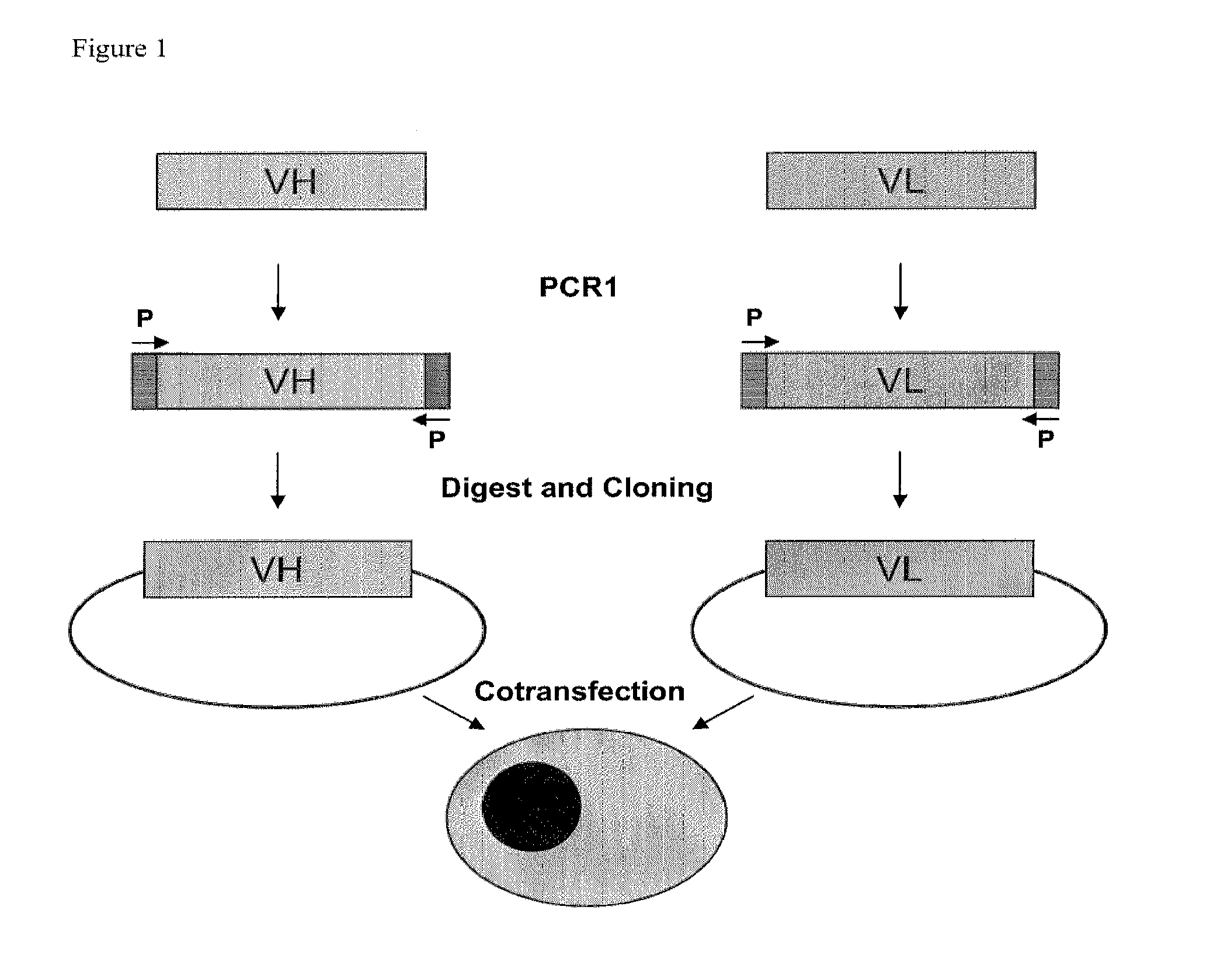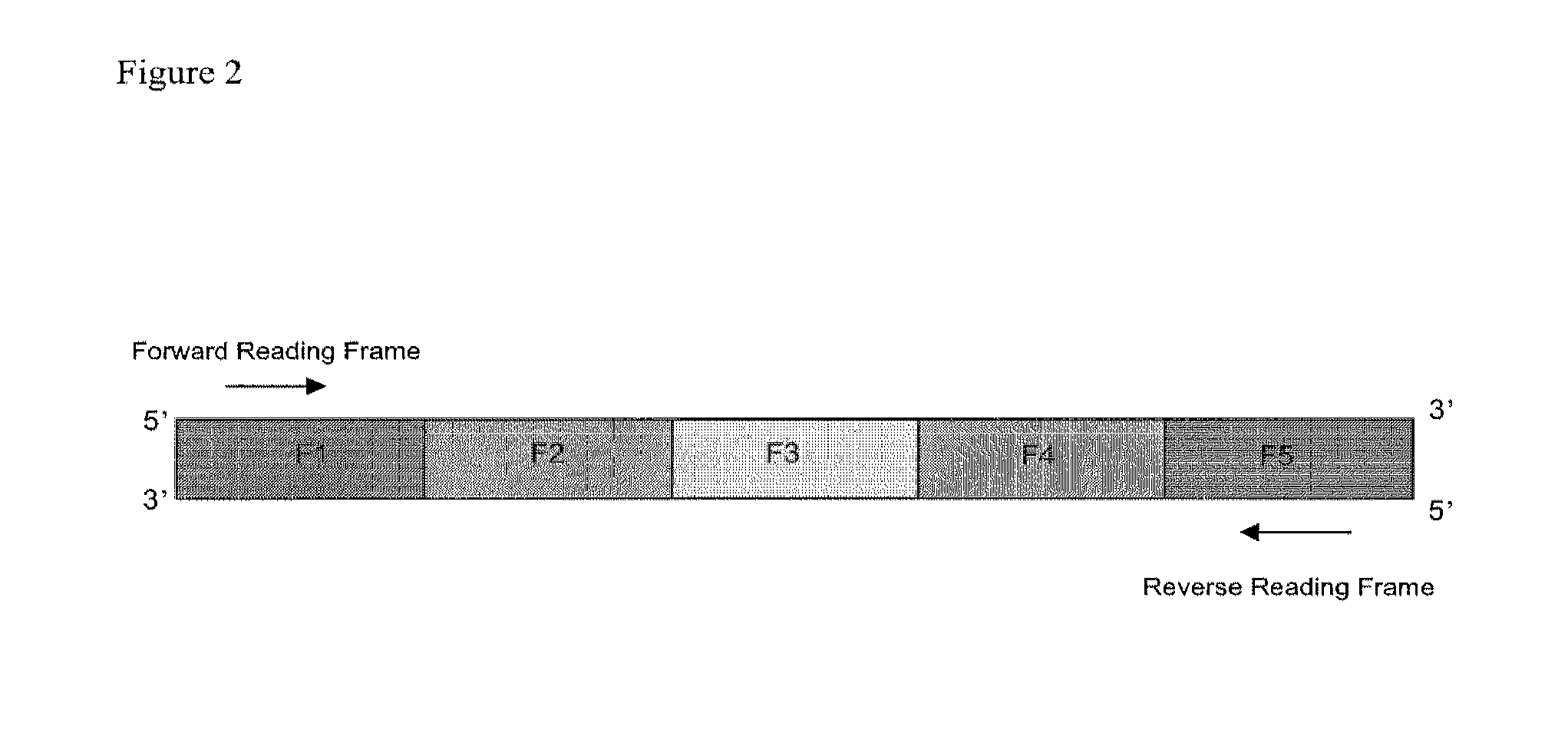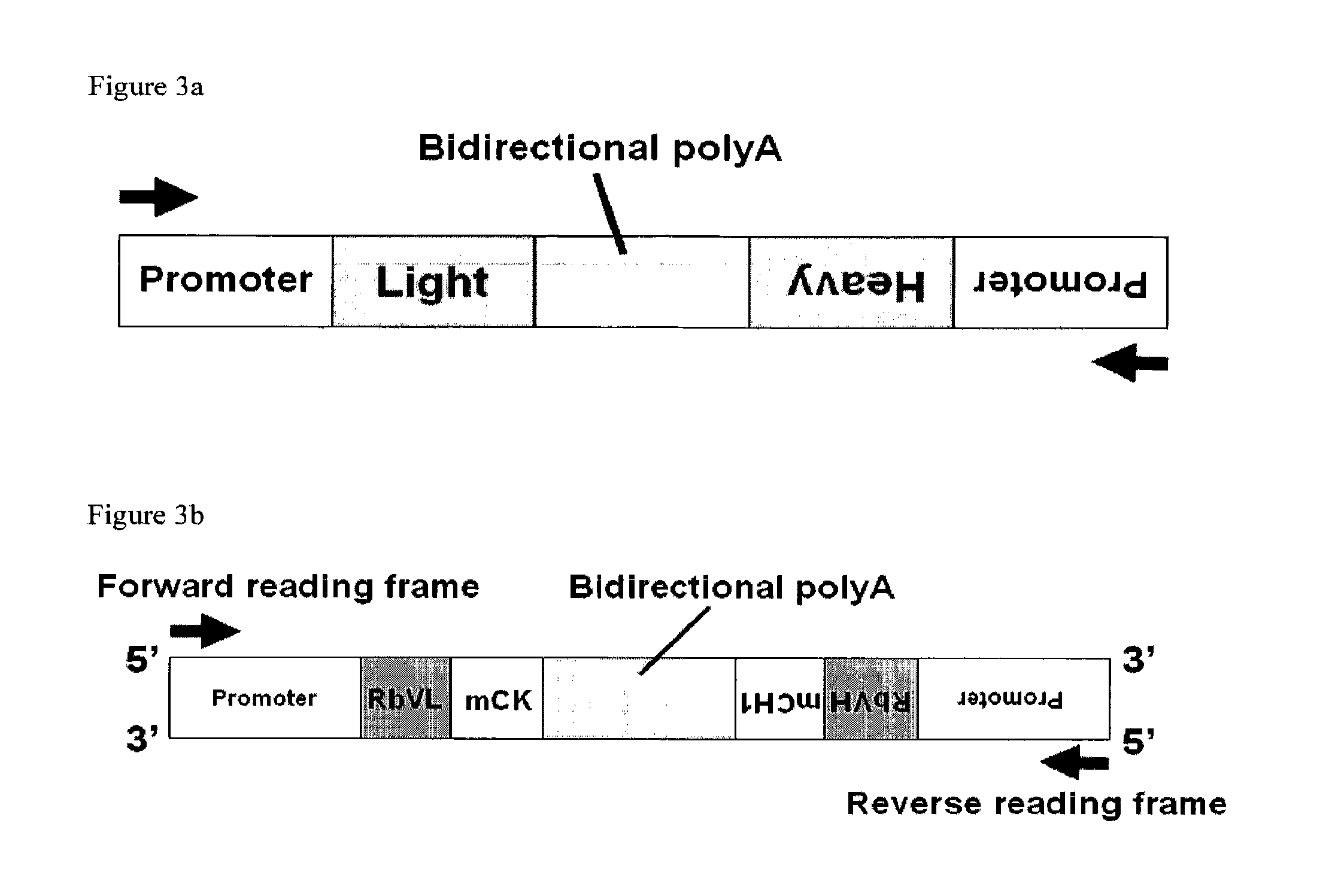Method For Producing Proteins
a protein and protein technology, applied in the field of proteins production, can solve the problems of difficult to ensure the same number of proteins, time-consuming and complex whole process to produce final antibodies, and achieve the effects of efficient transfection and expression, simplified and faster way to produce multimeric proteins, and efficient and fast and easy to obtain final antibodies
- Summary
- Abstract
- Description
- Claims
- Application Information
AI Technical Summary
Benefits of technology
Problems solved by technology
Method used
Image
Examples
example 1
Generation of Bidirectional polyA Sequence Comprising Constant Heavy Chain and Constant Light Chain Encoding Sequences
[0247]A sequence comprising in the following order: a mouse constant light chain encoding sequence (mCK) a bidirectional polyA sequence and a mouse constant heavy chain encoding sequence (mCH1), wherein the mCH1 is orientated in the opposition converging direction to the mCK sequence with respect to the reading frame, as shown in FIG. 3b. This sequence was generated as follows:
[0248]The mCK encoding sequence was restriction digested using restriction enzymes HindIII and EcoRI using standard molecular biology techniques from the in house vector pVmCK. This liberated the mCK domain which was flanked by HindIII and EcoRI restriction sites and had an internal BsiWI site at the 5′ of the constant domain.
[0249]An in house vector pVmFab′ was restriction enzyme digested using EcoR1 / XhoI restriction enzymes using standard molecular biology techniques to liberate the mCH1′ dom...
example 2
Generation of the Promoter Sequences
[0256]The generation of the two promoter fragments CMV and SFFV was performed by restriction enzyme digest from in house vectors which contained these promoter sequences.
[0257]The forward direction CMV promoter (as shown in FIG. 5a and SEQ ID NO: 10) which drove the transcription of the light chain genes in the final transcriptionally active polynucleotide sequence was digested out of the in house vector pkH11 using HindIII and MluI double digest. The SFFV promoter (as shown in FIG. 5b and SEQ ID NO: 11) was digested out of the in house vector pLentiSam6 using the restriction enzymes EcoRI and BamHI.
example 3
Generation of Heavy and Light Chain Variable Region Encoding Sequences
[0258]The variable region sequences were rabbit antibody variable regions specific for a mouse antigen.
[0259]The heavy and light chain variable fragments were amplified using specific oligonucleotide primers which recognised the variable regions and appended additional overlap sequences so that they would combine with the correct promoter and constant region in the final pull through PCR reaction to generate the transcriptionally active polynucleotide sequence.
Light Chain Variable (VK) Region Amplification
[0260]Oligonucleotide primers (primers numbered 8116 forward (SEQ ID NO:3) and 5839 reverse (SEQ ID NO:4)) specific for the VK domain of the rabbit antibody were used to amplify the domain from an in house vector (pVRbCK) containing the antibody VK domain, as represented by step 6 in FIG. 5b.
[0261]SEQ ID NO: 3 is the nucleotide sequence of a primer 8116 comprising a region (ATGGACAYGAGGGCCCCCACTC) complementary ...
PUM
| Property | Measurement | Unit |
|---|---|---|
| Temperature | aaaaa | aaaaa |
| Temperature | aaaaa | aaaaa |
| Temperature | aaaaa | aaaaa |
Abstract
Description
Claims
Application Information
 Login to View More
Login to View More - R&D
- Intellectual Property
- Life Sciences
- Materials
- Tech Scout
- Unparalleled Data Quality
- Higher Quality Content
- 60% Fewer Hallucinations
Browse by: Latest US Patents, China's latest patents, Technical Efficacy Thesaurus, Application Domain, Technology Topic, Popular Technical Reports.
© 2025 PatSnap. All rights reserved.Legal|Privacy policy|Modern Slavery Act Transparency Statement|Sitemap|About US| Contact US: help@patsnap.com



